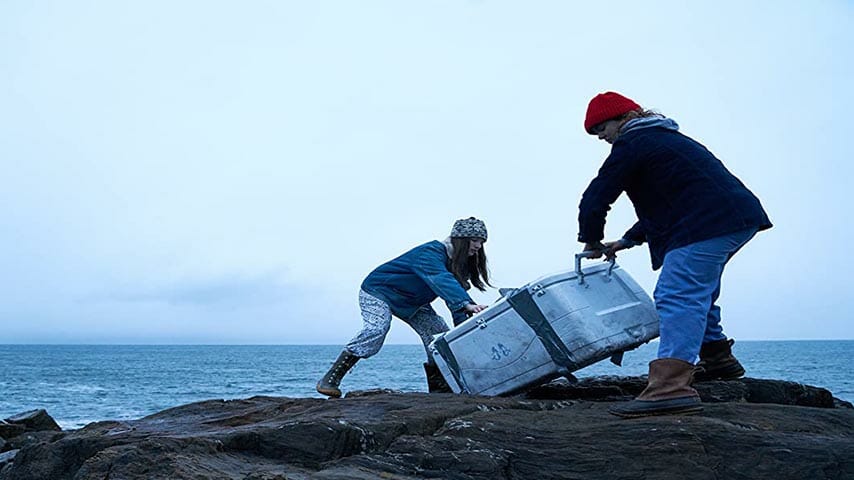
The “52FilmsByWomen” hashtag isn’t a new invention, but in the last few years it’s gained increasingly urgent relevance. Created and disseminated by Women in Film, a nonprofit outlet established to “achieve parity and transform culture,” the tag translates into a simple pledge: Watch one movie directed by a woman each week for an entire year. Most years, completing that pledge would be the least one could do. Today, it’s a means of pushing back against rampant gender bias in the film industry.
To help those interested in putting their viewing habits to good use, Paste is highlighting some of March and April’s best new movies on home video directed by women. Normally, this is where we’d talk about movies in theaters, too, but the COVID-19 crisis has forced a number of studios to either pull movies from theaters or delay their releases entirely. Instead, enjoy this selection of movies available for at-home viewing, two of which were featured as some of the best movies of the year so far:
Little Joe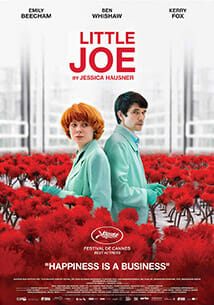 Release Date: March 10, 2020
Release Date: March 10, 2020
Director: Jessica Hausner
Stars: Emily Beecham, Ben Whishaw, Kerry Fox, Kit Connor, David Wilmot, Phénix Brossard, Sebastian Hülk, Lindsay Duncan
Genre: Drama, Science Fiction & Fantasy
Rating: NR
Runtime: 100 minutes
Jessica Hausner’s Little Joe may not be as straightforwardly campy as Frank Oz’s Little Shop of Horrors, as squirmy as Carter Smith’s The Ruins, or as pants-on-head stupid as M. Night Shyamalan’s The Happening, but in its way it’s equally as weird as each. These movies each work to offset the innate unbelievability of their premises, including Little Joe, a deliberately paced bit of Marxist criticism that’s equally as coy as it is chilling. Botanist Alice (Emily Beecham) has perfected her attempts at fashioning a genetically modified plant, designed to emit a scent to stir feelings of deep contentment in any person who catches a whiff of its bouquet. Alice has denied her creation reproductive capabilites because as movies have taught us, taking sex organs away from sentient beings bred in a lab is never a terrible idea. So it goes in Little Joe, as Alice’s colleagues fall one by one under the crimson plant’s sway and quietly devote themselves to its propagation, like genial, low-key pod persons. Whether viewers find Little Joe frightening or funky depends on where they’re sitting. Hausner and co-writer Géraldine Bajard very clearly don’t intend the film as an outright scary experience on the page. There’s a distance between the characters, and in turn between the characters and the audience, an emotional buffer that keeps everybody at arm’s length from one another. No wonder Alice engineers a house plant to induce chemical happiness—joy is a rare commodity in Little Joe. In a nifty little tweak of the botanical horror niche’s formula, the happier a character is, the more likely it is that they’ve been snared by Little Joe’s intoxicating aura, and honestly: Is that really so bad? —Andy Crump
Shooting the Mafia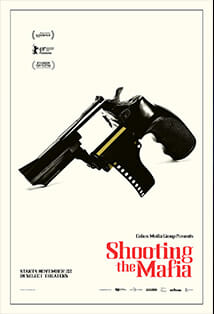 Release Date: March 24, 2020
Release Date: March 24, 2020
Director: Kim Longinotto
Genre: Documentary
Rating: NR
Runtime: 94 minutes
Imagine walking out your door every day knowing that the organization in control of the region you call home wants to kill you, and imagine not wearing body armor every time you show your face in public. Imagine instead taking a camera with you, photographing evidence of the organization’s atrocities and printing those photos in your local daily. Most folks probably can’t imagine that level of bravery, because that level of bravery is so rare, and for that everyone should be grateful for Kim Longinotto, filmmaker, and Letizia Battaglia, the subject of Longinotto’s documentary Shooting the Mafia.
Battaglia has the badass gene in her DNA; not only has she spent her career capturing the Mafia’s violent oppression of Palermo’s people on film, she has spent her whole life wrestling herself from beneath the thumb of oppressions of other sorts. Namely: marital and gender oppression, workaday levers of control over women’s actions and freedoms. She married at 16 and divorced her no-good husband in 1971, took lovers as she pleased, became the first woman to work as a photographer for a newspaper, L’Ora, in 1974. She snapped over 600,000 images in her time for the paper, fought for women’s rights and environmental causes as a member of the Green Party, basically cutting paths while seeking justice in everything she did.
Longinotto’s film honors Battaglia’s spirit while drawing straight lines between Italian culture, embodied through archival footage and images from the country’s neorealist traditions, and Mafia brutality. Cinema is a key component of Italy’s history. So are the Mafia’s crimes. Shooting the Mafia’s portrait of Battaglia positions her as a bridge between the two, not only a fearless trailblazer but a living link between two sides of her country’s past. —Andy Crump
Blow the Man Down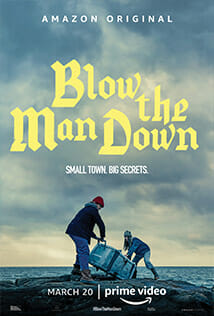 Release Date: March 20, 2020 (Amazon Prime)
Release Date: March 20, 2020 (Amazon Prime)
Directors: Bridget Savage Cole, Danielle Krudy
Stars: Morgan Saylor, Sophie Lowe, Margo Martindale, June Squibb, Will Brittain
Genre: Comedy, Drama, Thriller
Rating: R
Runtime: 90 minutes
It’s often the case that movies set in and around parts of New England try way too hard to hammer their cast’s speech patterns into half-assed, broadly drawn regional accents. These movies tend to suffer for it; the parody writes itself. Blow the Man Down doesn’t avoid the regionalization, because being set in and filmed around Maine it simply can’t, but directors and screenwriters Bridget Savage Cole and Danielle Krudy have not only written dialogue good enough to carry the weight of hokey Northeastern drawls, they’ve put together an ensemble capable of pulling back on that hokiness. The latter’s an impressive enough feat before taking the quality of Cole and Krudy’s craft into consideration. Blow the Man Down takes a few cues from the work of the Coen brothers, too, and perhaps even more from John Michael McDonagh, whose excellent 2011 film The Guard feels like spiritual kin. Here, sisters Mary Beth and Priscilla Connolly (Morgan Saylor and Sophie Lowe), having buried their mother, take over running the family fish shop in the port they call home, and after a series of unfortunate events become entangled in murder linking them up with the town’s seedy underbelly. What the film captures best about New England is the flinty reticence and secret-keeping. Everyone has something they’re compelled to hide, whether shame or grief or actual wrongdoing. Watching Blow the Man Down unravel all of those threads is its greatest pleasure. —Andy Crump
Crip Camp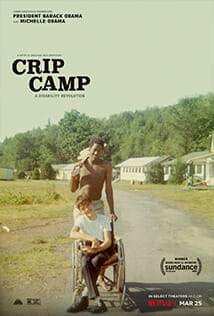 Release Date: March 25, 2020
Release Date: March 25, 2020
Directors: Nicole Newnham, James Lebrecht
Genre: Documentary
Rating: NR
Runtime: 108 minutes
Crip Camp, a documentary about a summer camp for disabled teens, is a movie that, in a casual director’s hands, could turn very easily into a piece of exploitation honed in on adversity. But Jim Lebrecht and Nicole Newnham aren’t casual. They’re coworkers, having collaborated on three documentaries together over the past decade and a half, and Lebrecht, who has Spina Bifida, attended said summer camp in 1971. The film is a personal matter for Lebrecht, facilitated with his longtime colleague. Guided by their relationship, Crip Camp functions partly as a portrait and partly as advocacy. Half of it is spent strolling down memory lane, revisiting either through oral history or archival footage days at Camp Jened in the Catskills, where teenagers with disabilities—deaf teenagers, blind teenagers, teenagers who survived polio, teenagers with cerebral palsy—congregated under the guidance and care of hippy counselors. Here the teens, many for the first time in their lives, were treated simply as teens, and not as societal inconveniences. The other half of the movie unfolds against the backdrop of the battle for Section 504, fought in 1977, as disabled Americans, many of them former Jened campers, organized protests and a famous sit-in to persuade Joseph Califano to sign the important regulations into law. The campaign for disabled rights deserves a spotlight for its own merits, as this isn’t really a chapter in history standardly taught in American schools, but the specifics of Crip Camp’s subject speaks to a broader, urgent point about the power of community: When people unite under one banner for a common cause, there’s little they can’t accomplish. A message as timely as it is timeless. —Andy Crump
Never Rarely Sometimes Always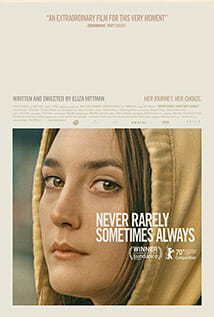 Release Date: April 3, 2020
Release Date: April 3, 2020
Director: Eliza Hittman
Stars: Sidney Flanigan, Talia Ryder, Sharon Van Etten, Ryan Eggold
Genre: Drama
Rating: NR
Runtime: 95 minutes
I keep thinking about the suitcase: Skylar (Talia Ryder) packs sweaters and a pair of jeans into an oversized travel bag (oversized, at least, for what is supposed to be a day-long trip). The next morning, Skylar and her cousin Autumn (Sidney Flanigan) board a bus from their hometown in rural Pennsylvania to New York City. When they get to Manhattan, the cousins take turns carrying the large bag, guarding it, rolling it on the sidewalk, lugging it up and down steep subway stairs. The pair has carefully planned a trip to New York so that Autumn can get an abortion without her mom (Sharon Van Etten) and stepdad (Ryan Eggold) knowing, since Pennsylvania requires parental consent for the procedure. The bag is the burden they carry; Never Rarely Sometimes Always—in emotive close ups, creating intimacy as if the viewer gets a chance to see the world through Autumn’s often solemn, stoic gaze—chronicles Autumn’s tortuous and convoluted path just to take agency over her body, studying the patience and perseverance that women often need to navigate the world. It’s a film punctuated by waiting, for one appointment or the other, or for the promise of safety. There are, however, brief moments that remind audiences that Autumn and Skylar are just kids—playing arcade games, or enjoying the thrill of an unfamiliar city—and these scenes, provide, at least, glimmers of respite or perhaps windows into what life could be if like if they didn’t have to work so hard for bodily autonomy. —Isabella Bridie DeLeo
Sea Fever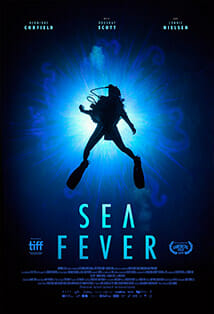 Release Date: April 10, 2020
Release Date: April 10, 2020
Director: Neasa Hardiman
Stars: Hermione Corfield, Dougray Scott, Connie Nielsen, Ardalan Esmaili
Genre: Horror, Thriller
Rating: NR
Runtime: 89 minutes
Talk about bad timing. Or good timing? Whether Sea Fever’s release coinciding with the pandemic is to either the film’s benefit or detriment is a question without a concrete answer, but like Nicolas Pesce’s The Grudge, it’s all a matter of strange kismet. How else to take a horror movie about people stuck in tight quarters together, endangered by a heretofore unknown entity that transmits to hosts with but a touch and kills in geysers of blood? And the one person in the cast smart enough to make deductions and offer advisories on how to proceed is routinely ignored by everybody else, especially when that person identifies self-isolation as the safest course of action. Prescient! Sea Fever, however, isn’t about a virus but an undiscovered lifeform that inhabits the photic zone, basically a gargantuan tentacled thing that passes on its spawn to other organisms, which then explode violently from said organisms’ eyeballs. The creature menaces the crew of a fishing trawler off the West coast of Ireland, including Siobhán (Hermione Corfield), the introverted marine life expert brought on board to sort out “anomalies” in the catch. She’s also the only one capable of figuring out what’s happening to the boat, and the crew, in what reads as an amalgam of The Thing and Leviathan, with maybe a bit of The Abyss in there as well. Sea Fever’s gory, claustrophobic paranoia is only part of its pleasure. There’s terror in the depths, but bioluminescent beauty, too, the kind that inspires Irish folklore when it should inspire a moratorium on fishing. Sea Fever didn’t get to pick its moment, but the moment is ripe for movies like it to help put in perspective the matter of quarantine. A great movie at any time, but an unexpectedly thought-provoking movie for the time that we’re in. —Andy Crump
The Other Lamb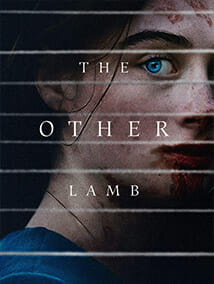 Release Date: April 3, 2020
Release Date: April 3, 2020
Director: Ma?gorzata Szumowska
Stars: Michiel Huisman, Raffey Cassidy, Denise Gough
Genre: Drama
Rating: NR
Runtime: 94 minutes
All anyone needs to know about the world of The Other Lamb is that it’s nestled somewhere within our own, but filmed in sharp neoclassical tones and with a surrealist atmosphere. Ma?gorzata Szumowska’s latest feature, though of arguable genre origins, reads as dreamlike verging at times on nightmarish; the movie never gives viewers a good reason to question what they’re seeing on screen, but Szumowska’s grim fairy tale evocations do lend her work a sobering otherworldliness. The Other Lamb takes place in America, but at America’s outermost edges, where the world remains untamed and ripe for patriarchy’s proliferation.
The film orbits a cult led by a man referred to only as Shepherd (Michiel Huisman), and whose members are all women: They’re either his wives, or the daughters he’s had with each of them. The Other Lamb refers to Selah (Raffey Cassidy), his favorite daughter, at first his most devoted follower but, as the story unfolds, she turns against his teachings. The core plotting is somewhat predictable—because how many movies about cults move straight ahead without the cult’s ideologies falling under internal scrutiny?—but the way Szumowska carries out that conflict is unique to her vision. The Other Lamb is what The Handmaid’s Tale wants to be but can’t for lack of sharp aesthetic sensibilities and actual craftsmanship. The tension lets up in the last act when it should clutch at our throats, but visually, texturally and emotionally, The Other Lamb reminds us why we go to the movies in the first place. —Andy Crump
The Assistant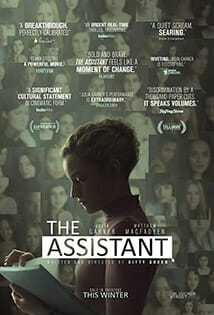 Release Date: April 28, 2020
Release Date: April 28, 2020
Director: Kitty Green
Stars: Julia Garner, Matthew Macfayden, Makenzie Leigh, Kristine Froseth
Genre: Drama, Thriller
Rating: R
Runtime: 87 minutes
The nameless, faceless boss hiding behind closed doors in Kitty Green’s exceptional The Assistant can be easily read as a Harvey Weinstein stand-in. The truth is that Harvey Weinstein isn’t or, now that he’s in prison, wasn’t the only man in the film industry with a habit of abusing his position and privilege by preying on women in his office, either through coercion or through brute force, he is, or was, the most notorious of them. So yes, The Assistant can be thought of as “the Harvey Weinstein movie,” but it really should be thought of as the best contemporary movie to act out patriarchal rape culture dynamics on screen.
Regardless, take Weinstein out of your interpretation of The Assistant and the film will still throttle you slowly, packing suffocating pressure into each of its 87 minutes. Green’s primary tool here is stillness: Static shots dominate the production, stifled frame after stifled frame, with the camera, manned by Michael Latham, often left hovering above Green’s star, Julia Garner, as if he means to leave space for her unanswered silent prayers to hang over her head. She plays the title’s long-suffering assistant, silent witness to her boss’s bullying and wanton lasciviousness, helpless to stop it. She spends the film unraveling over the course of a day, confronting her complicity in his sexual predation with no tangible hope of ending the cycle. Because there is no hope in The Assistant, no chance the film’s central evil will meet his punishment, or that the system built to facilitate his evil will collapse. What Green has done here is brutal and unsparing, but it’s also flawlessly made and necessary. —Andy Crump
Selah and the Spades Release Date: April 17, 2020 (Amazon Prime)
Release Date: April 17, 2020 (Amazon Prime)
Director: Tayarisha Poe
Stars: Lovie Simone, Jharrel Jerome, Celeste O’Connor, Ana Mulvoy-Ten, Jessie Williams, Even Roe, Nekhebet Kum Juch, Francesca Noel
Genre: Drama
Rating: R
Runtime: 89 minutes
High schoolers make their own cliques. It’s the natural order of things. But most high school cliques don’t operate like they’re mob families, each designated as traffickers in information, secrets, drugs and raw power. The kids at Haldwell, a fictional boarding school nestled in idyllic Pennsylvania, are consiglieres and made men in training more than they are students, and yet at the end of the semester, that’s really only what they were. Selah and the Spades roots its driving struggle in that dynamic: the prototypical teenage search for autonomy, clanging against Haldwell’s organized crime structure. And at the center of the dynamic stands proud, indomitable Selah (Lovie Simone), both hero and villain in director Tayarisha Poe’s outstanding first feature. Poe’s film has clear antecedents, being The Lord of the Flies, Brick, The Godfather and even Rushmore, but she has personality all her own. Title cards string scenes together, introducing viewers to Selah and her faction, the Spades, and the other factions running the show at Haldwell—the Seas, the Bobbies, the Perfects, the Skins—with slick brio. Steamer trunks filled with drugs glow when opened up for business. The vibe here is “cool,” but in defiance of lazy old “style over substance” criticisms, Selah and the Spades lets its style feel substantial. The movie’s story, about a young Black woman fighting relentlessly for self-governance in a world built to govern her, echoes with ambition reflected in Poe’s aesthetic. She’s made to date one of 2020’s most compulsively watchable debuts. From here, that ambition should carry her far. —Andy Crump